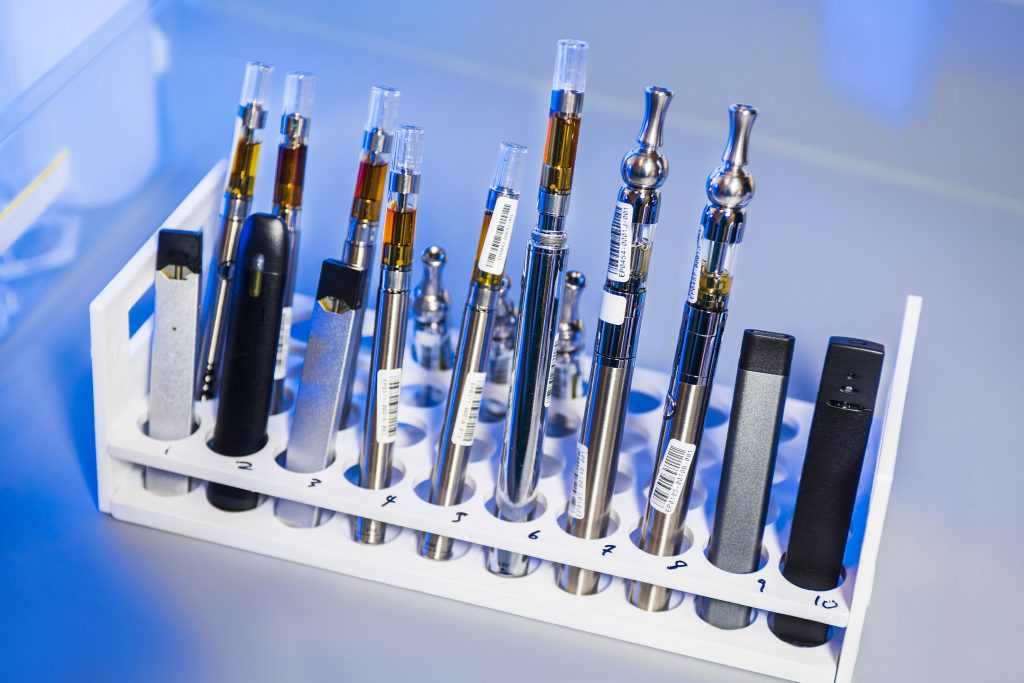It kills, it causes cancer, it makes your teeth yellow, it makes you age faster. And the list goes on. We know smoking is bad, but people around us continue to do it—and our culture is just as responsible as our policies and education.
Despite efforts by the Singapore government to lower smoking rates among citizens, the numbers remain consistently high. In 2019, 10.6% of the population between the ages of 18 and 69 smoked tobacco every day. Back in 2004, the figure was 12%, meaning we haven’t moved much in the past 16 years—and these figures do not consider those who smoke occasionally, and the friends and family who inhale second hand smoke.
One night out with my friends is all it takes for me to realise how smoking addiction still thrives around us, enabling smokers to continue their habits, and pulling non-smokers in to participate in smoker activities. From following our friends for cigarette breaks to letting them choose bars with smoking areas, it silently controls the decisions of non-smokers as well.
I am guilty of it. I am not a smoker per se, but on most given nights out i’ll gladly follow my friends to the smoking area as an excuse to socialise. In doing so, I am still enabling, contributing, and participating in the normalisation of smoking in society‚ and even propagating the idea that the smoking area is the ‘place to be.’
So living in a nation that is actively trying to reduce the number of people smoking, we need to ask ourselves why we are failing to do so. And there’s no single answer to that, but one thing is for sure: smoking culture still thrives all around us. And if we want to bring the numbers down, we will need to look at the issue from a new lens. And this includes looking at less harmful alternatives.
Because Smoking Has Been Entrenched in Our Culture For Generations
To start with, we can’t look at society’s relationship with smoking without touching on the roots of the issue that dates back generations. Leslie Goh, a communications manager at addiction centre WeCare, said that when he was growing up, smoking was normal and happened in almost every place he went to.
“My father was always smoking,” he tells me, and “most of my aunties, uncles and other adults” smoked too. When Leslie was about 30, he lost his father to lung cancer.
“When I was young, I didn’t know that smoking was bad. No one even used the word addiction, especially not for cigarettes,” he said.

Medically, our understanding of what smoking does to us has advanced rapidly. Many changes have been made in society too. Smoking is restricted to specific outdoor areas, prices of cigarettes have gone up, advertising has been banned, awareness has grown, and age restrictions are on the rise. But culturally, we still have a long way to go.
“You still see it all the time,” Leslie said. “You see it on Mad Men, on Euphoria. It’s in books. In music videos. It’s still made to look cool.”
This has exceptionally worrying implications for young people. Being exposed to the romanticisation of smoking in the media makes young people more susceptible to picking up a cigarette themselves.
Because It’s Hard To Stop When We Are Constantly Triggered
People start smoking for various reasons. Most tend to start in their teen years, for reasons spanning from peer pressure, being exposed to smoking from a young age, the impacts of popular culture, wanting to rebel against their parents, self-medicating for mental health struggles, and so on.
But cigarette addiction impacts adults, senior citizens and people from all walks of life. And whatever the reason for starting, smoking is extremely addictive, and those who start struggle to stop—no matter who they are.
Even in small doses, nicotine creates pleasurable feelings and makes your brain release dopamine, playing into our mental reward circuit. This reaction physically changes your brain, making it increasingly hard to stop. On top of that, cigarette smoking can temporarily relieve anxiety, make you more focused, relieve tension and provide a ritual to socially bond over—releasing more ‘feel good’ hormones.
Once the brain gets hooked onto this process, people struggle to perform different daily activities without cigarettes. There are professionals who smoke at work to socialise and as a way to take a break,there are people who smoke with their morning coffee to kick-start the day, people who enjoy a smoke with their wine at night to unwind, people who smoke in social situations as an ice-beaker, and the list goes on.

Which brings us back to popular culture and our urban environments—even when smokers try to stop, there are too many triggers around them that pull them back into doing it.
“When you see it, you want to do it. The award centre in the brain takes over the part that makes executive decisions,” Leslie explains.
“It’s not an issue of willpower, moral fibre or character—if you’re an addict you can’t say no,” Leslie said. “One of the biggest misconceptions in society is that addiction is a condition. It’s actually a mental health issue because of how it changes the brain.”
For smoking not to be normalised around us, we need less smokers around. But if they struggle to quit because they are continually triggered by popular culture, or from seeing people in smoking areas, this will be increasingly hard to do.
So on one hand, targeting these triggers means addressing the external influences. But that’s only one part of the discussion, because that doesn’t account for the physical and mental addiction to nicotine. If people can stop, that is obviously ideal, but we have to be realistic and realise that many can’t in a short amount of time—or ever.
In that case, do we just let them continue smoking as they normally do? Or should we look at ways to reduce the harms of smoking? More on that later…
Because We Normalise Other Addictions As Well
In our day to day activities like work and school, smoking seems to be slightly less widespread. Maybe, this is because there are stricter rules about where smoking areas are allowed in these spaces. But if you go out at night, suddenly the number of people smoking seems to multiply—especially where alcohol is served. And this is not to say that smokers are necessarily drinkers too, but there does seem to be a correlation in some cases.
And this may apply to you, and surely does to me too. You know the feeling—you’re sitting around having a few drinks, you’re getting a little tipsy and suddenly, you find yourself craving a cigarette.
So you take one, you get that slight head rush, you feel chilled out, and before you know it you’re asking your friends for another one. There is an explanation for this.
Firstly, nicotine counters the depressant effect of alcohol. So the more we drink, the more we crave the high of smoking to bring us back up. Second, drinking makes us lose some of our inhibitions, and therefore we allow ourselves to go for more cigarettes than we normally would. In other words, we know smoking is bad, but the alcohol helps us forget about that and chase the physical pleasure.
“From drinking and smoking, I get a constant flood of mood changes that relieve the negative feelings and reinforce the positive ones. Gambling can be yet another addictive mood changer. Gambling, smoking and drinking make a perfect combination which can hijack my brain for hours or even days,” said Andrew, chairman of WeCare.
Gambling, smoking and drinking make a perfect combination which can hijack my brain for hours or even days.”
With this normalisation, it is hard to perceive the said action as an addiction. Partly, Leslie says this has to do with the way the word addiction is used in society today.
On one hand of the spectrum, people use it very loosely, saying things like “I’m addicted to Starbucks.” On the other hand, “the word is loaded with shame and guilt,” which stops people from wanting to attach it to situations, and therefore understanding the nuances behind it.
But if we could address smoking as an addiction, and in the entirety of the word, smokers, non-smokers and healthcare practitioners would understand the mental health implications behind the action, and would allow us to better address the situation as a society. To simply put it, quitting smoking is not as simple as it sounds.
Because If We Can’t Stop Entirely, Should We Find A Less Harmful Replacement?
As I briefly mentioned earlier, quitting is a huge struggle, and realistically, may not happen for many people. I personally have seen friends and family members struggle to do it, and it’s not fun for them. That may be why many people turn to smoking alternatives as a stepping stone to quitting entirely.
And while some people like to compare the people who say ‘vaping is less dangerous’ to the 20th century advertisements that said “luckies are less irritating,” there are actual studies that suggest vapes and e-cigarettes are less harmful than conventional cigarettes, but also help people quit smoking entirely.
A study by the UK government found that vaping products are comparable to licensed medication in helping people stop smoking. Another study found that vaping was more successful than nicotine gum in helping people out of the addiction.
In the UK, vapes and e-cigarettes are completely legalized, and are provided as legitimate alternatives to help people stop cigarette smoking.
The US is also in the process of finding the right regulation for these alternatives.

So if we know smoking is so difficult to stop, and we can mitigate the negative side effects of it with alternative products, why not?
“Because of the children!!” some may shout out.
This comes from the concern that flavoured vapes and e-cigarettes may be attractive to children, and get them to try smoking at a young age. However, the same UK government study mentioned above found that “current vaping is mainly concentrated in young people who have experience of smoking. Less than 1% of young people who have never smoked are current vapers.”
This comes to show that vapes don’t necessarily attract kids on their own per se, and instead draw in people who already dabbled in the activity. And for the small number of young people who are attracted by the flavourings, regulators can address the issue by banning the advertisement or sale of vape flavourings, or by raising the age limit to buy such products.
“Vaping nicotine or using heat-not-burn products are simply less harmful delivery technologies.”
And while we continually try to protect children from vaping, shouldn’t we also continue to help those who can’t quit smoking to try arguably healthier alternatives?
In Singapore, vapes and e-cigarettes are banned, but hundreds if not thousands continue to use them. And without regulation, Singapore’s government can’t ensure their citizens are getting vapes and e-cigarettes that don’t contain dangerous compounds—like some of the flavourings used in the liquids for these products.
If people still need nicotine, or time to lay off from the addiction, then options that are not as harmful should be given to them.
“It is not the nicotine that is dangerous, it is the other 600 toxins in conventional cigarettes,” Andrew says. “Vaping nicotine or using heat-not-burn products are simply less harmful delivery technologies.”







